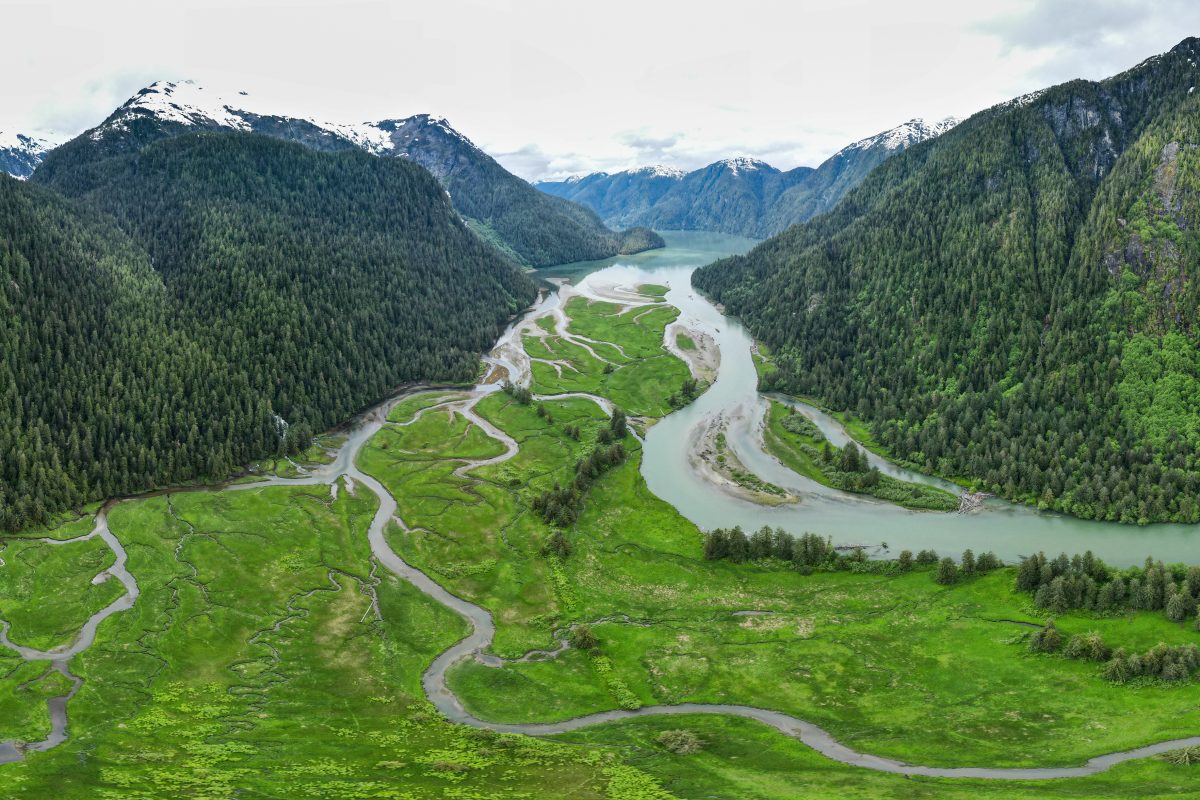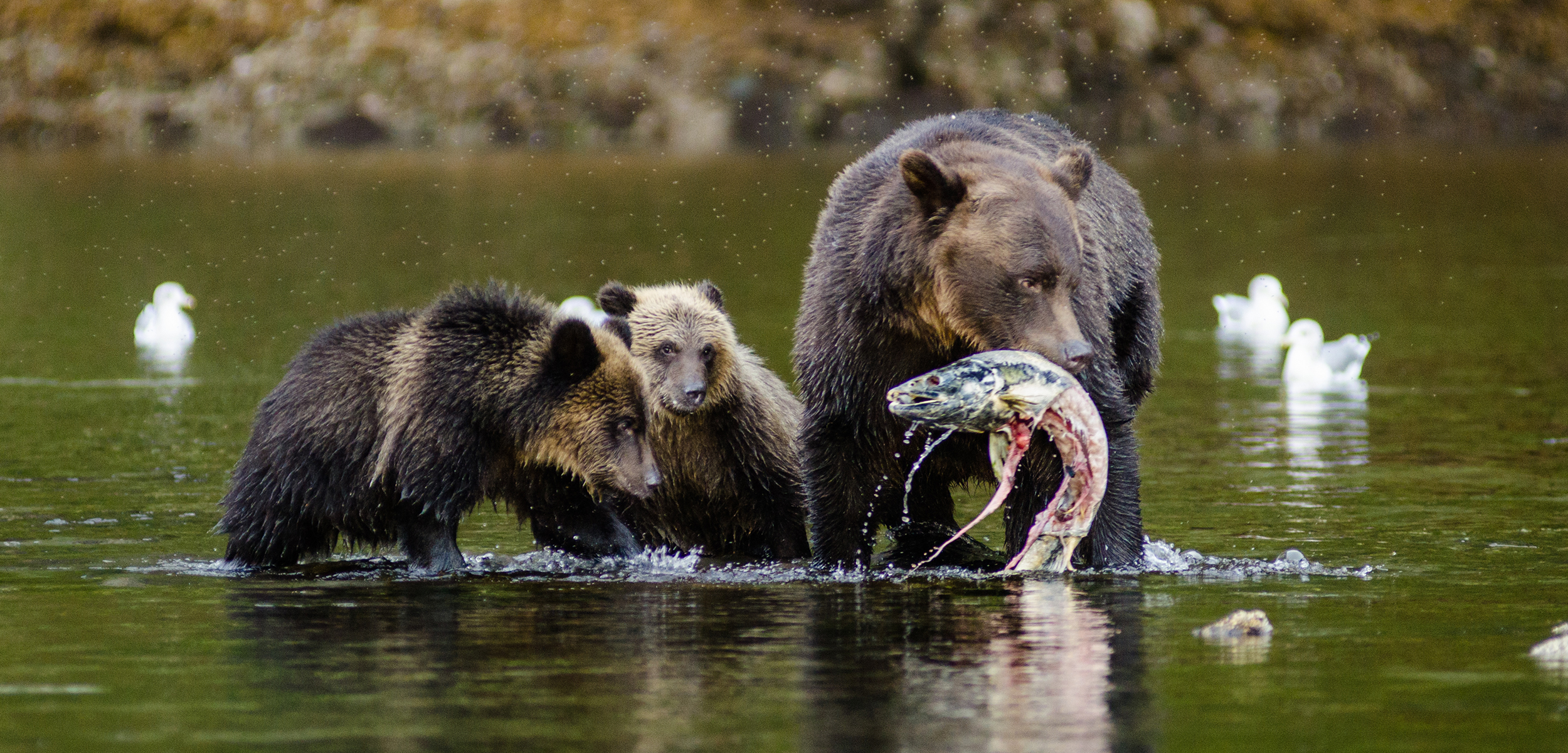Like It or Not, Even Wildlife-Focused Ecotourism Affects Wild Animals
Under the watchful gaze of ecotourists, British Columbia’s grizzly bears become skittish and avoid prime hunting spots.
Article body copy
Every year, thousands of tourists from around the world visit British Columbia’s coastal rivers in search of an exciting up-close experience with a grizzly bear. That is, every year except 2020, as COVID-19 lockdowns closed most of the province’s ecotourism industry. The sudden absence of tourists here and around the world gave scientists an unprecedented opportunity to study our influence on wild spaces. And according to two recent studies, while people certainly enjoy watching bears, grizzlies don’t necessarily like being watched.
One of the studies, led by Monica Short, a graduate student in applied conservation at British Columbia’s University of Victoria, shows that in the salmon-bearing Khutze River watershed on British Columbia’s central coast, the resumption of commercial bear-viewing in 2021 caused grizzly activity to decrease and some people-shy bears to avoid prime fishing sites.
“It was really fascinating to see how sensitive these bears can be to our activity,” Short says.
Partnering with the Kitasoo Xai’xais Stewardship Authority, Short and her colleagues set up motion-sensing trail cameras across five square kilometers along the Khutze River to track bear activity from July to September 2020—when tourism was banned—and again in 2021 after commercial bear-viewing reopened.
Compared with during the lockdown, Short found that the return of tourists caused grizzly bears to become warier. Bears sought out more sheltered, forested sites rather than spending time in exposed areas, such as open estuaries. The study also shows it could take weeks without bear-viewing to achieve the same level of bear activity along the river as was documented during 2020.
Scientists found that adult male grizzlies in particular are more likely to avoid tourists than females with young—especially when salmon runs are healthy and the males can forage undisturbed in less-visited upstream areas.
As salmon numbers dwindle, however, those same bears are more likely to risk coming into closer contact with people to access prime fishing sites and store enough fat to get them through winter hibernation. “They need to get those fish,” Short says. “They don’t really have many other options.”

The Khutze River watershed, on British Columbia’s central coast “is a magical, wonderful place to see these bears in a really remote environment that feels very natural,” says Monica Short, a conservation research graduate student at the University of Victoria in British Columbia. Photo by Vernon Brown
Part of the problem, says Owen Nevin, a behavioral ecologist and authority on large carnivores at the Western Australian Biodiversity Science Institute, is that bear-viewing platforms are often located right on top of the bears’ feeding sites. On the other hand, viewing from such platforms provides more predictable results than from boats, making it easier for researchers to detect impacts on bears, says Nevin, who did not participate in the study. Ecotourism in the Khutze River involves land- and boat-based viewing, and “there are pros and cons to both,” he says.
Short also worked on the second study, looking at how tourists influence grizzly bears along the Atnarko River, which is also on British Columbia’s central coast. Compared with the Khutze River, which is remote and sees comparatively fewer visitors even at peak times, the Atnarko River is accessible by a paved road and draws larger crowds, and the region continued to draw visitors in 2020.
While the two studies have common findings—confirming that bear activity declines as the number of visitors increases—the Atnarko River study shows one unexpected difference. At this site, Short says, the researchers saw female grizzlies with cubs seemingly using the presence of tourists as a shield to deter male grizzlies from preying on their cubs. As in the Khutze River, big males are less likely to hang around viewing sites, presenting an unexpected benefit to cubs, which might otherwise be killed by such males. Although both studies show that bear behavior is clearly affected by tourists, Short says it needn’t be this way. The goal is to find ways to conduct ecotourism “that benefits bears as well as ensuring the tours are still really high quality for the operators and their guests,” she says.
To that end, Short and her colleagues lay out several ways to minimize the impacts of tourists on the region’s grizzlies, including limiting tours to consistent hours so bears can learn when best to avoid people, limiting the number of visitors, and closing tourism at key times, such as early in the season if the salmon abundance is low.
Nevin says any lengthy closure of grizzly tourism could risk making viewing operations commercially unviable. Some of these operations are owned by First Nations or associated with lodges, and they provide income for remote communities. Further study could help zero in on what exactly it is about visitors’ presence that’s affecting the bears. It might be the number of visitors, or the number of tours, or the hours of operation that has the greatest influence, he says. Ultimately, Nevin says, ecotourism has fewer negative impacts when bears have access to other feeding areas or when food is abundant.
Katherine MacRae, the executive director of the Commercial Bear Viewing Association of British Columbia, says her association’s 27 operators hire trained guides to reduce negative impacts on bears. Operators, she says, follow best practices, such as minimizing noise and movement, keeping tourists in a group, putting food and garbage in airtight containers, and respecting that some bears are more nervous around people than others. “If the bears are not looked after, the business, in the end, is going to suffer, and that’s not what anyone wants,” she says.

